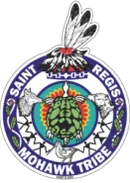-
Community & Family Services
- Care Management Program
- Child Support Enforcement Unit
- Family Support
- HCBS Waiver
- Home Improvement Supplement Program (HIP)
- Homeowner's Assistance Fund
- Individual Residential Alternatives (IRA)
- Individual Supports and Services (ISS) - Housing Subsidy Program
- Office of the Family Advocate
- Three Sisters Program
- Tribal Vocational Rehabilitation (TVR)
- Community Partnership Fund
- Economic Development
- Education
- Environment
- Executive Director's Office
- Finance
- Generations Park
- Grants & Contracts
-
Health Services
- A/CDP Outpatient
- A/CDP Prevention
- Partridge House (Inpatient)
- Ronthahiiohsthá:ke Clubhouse
- Business Office
- Centering Pregnancy
- Dental Clinic
- Health Promotion and Planning
- Laboratory
- Let's Get Healthy - Diabetes Center for Excellence
- Medical Clinic
- Mental Health - Kanikonri:ihne (Good Mind Counseling)
- Outreach Chronic Care Nursing
- Pharmacy
- School-Based Health Center
- Home Improvement Supplement Program (HIP)
- Human Resources
- Office for the Aging
- Office of Emergency Management and Safety
- Planning and Infrastructure
- Social Services Division
- Tribal Historic Preservation Office
- Tribal Police
A Remedial Action Plan is a required cleanup plan for all designated AOCs in the Great Lakes basin.
Each AOC approaches RAP development in different ways. Some have a "hands-on" style of involvement in the process while others delegate much of the decision-making to local groups or agencies within the AOC.
Components
According to the Great Lakes Water Quality Agreement, each RAP must include the following:
- A list identifying which of the 14 Beneficial Use Impairments are present and their causes
- The criteria for restoring the BUIs - taking into account local conditions and established in consultation with the local community
- Remedial measures to be taken, including identifying the parties that will be responsible for implementing these measures
- A summary of the measures taken and and their progress in removing the BUI
- The monitoring and evaluation program to track the remedial measures and how they lead to removing the BUI
The RAP includes management actions necessary for delisting. These are the reasonable and realistic actions that could be taken to remove the relevant BUIs and, hence, delist the AOC. These actions may not result in the immediate removal of a set of BUIs, but they are expected to remove the contaminant threat that will allow environmental conditions to improve over time and lead to eventual delisting of the AOC.
The RAP is updated on a regular basis to reflect changing local conditions. Cleanup projects may be completed showing progress, studies and analyses of BUI conditions may be completed and other issues may arise that show that BUIs are moving towards removal. RAPs are useful planning and tracking documents that reflect the dynamic nature of the AOC cleanup program. They reflect the ongoing cleanups and changes to the AOC in the pursuit of BUI removal and AOC delisting.
Current RAP Status as of Fall 2022
| BUI #1 - Restrictions on Fish and Wildlife Consumption |
| |
| BUI #3 - Degradation of Fish and Wildlife Populations |
| |
| BUI #4 - Fish Tumors of Other Deformities |
| |
| BUI #5 - Bird/Animal Deformities or Reproductive Problems |
| |
| BUI #6 - Degradation of Benthos |
| |
| BUI #14 - Loss of Fish and Wildlife Habitat |
| |

